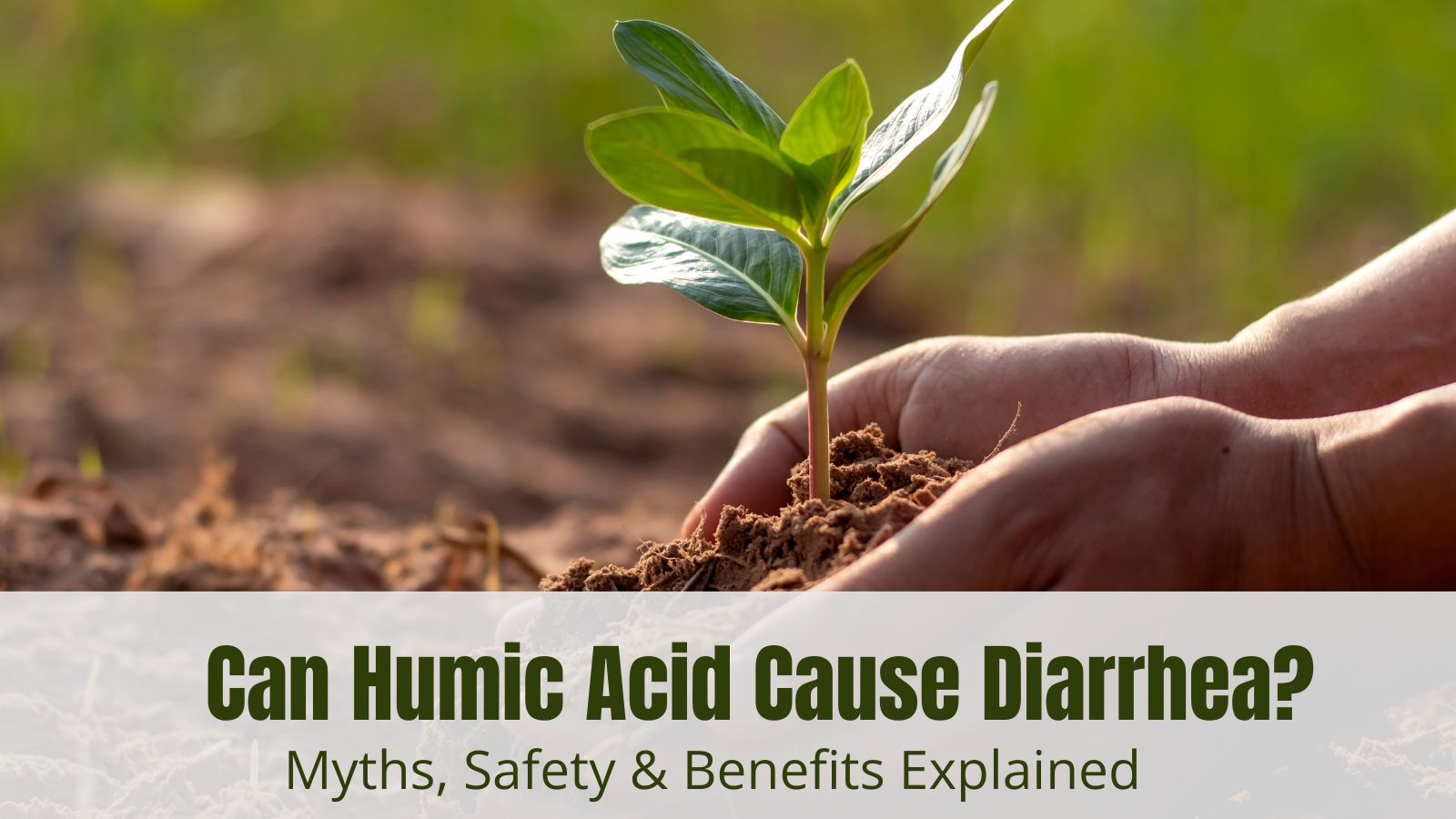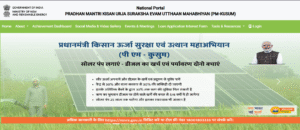With growing interest in organic farming and soil health solutions, many farmers and agricultural professionals are asking: can humic acid cause diarrhea or other health concerns? This important safety question needs scientific answers, especially as humic acid products become increasingly popular across Indian agriculture.
Understanding the safety profile of humic acid is crucial for farmers, retailers, and anyone handling these products regularly. This comprehensive guide separates fact from fiction, providing evidence-based information about humic acid safety while exploring its remarkable agricultural benefits.
Understanding Humic Acid Safety Profile
Humic acid is a naturally occurring organic compound formed through the decomposition of plant and animal matter over geological time periods. Black Diamond Humic Acid and Bijlee Humic & Fulvic Acid from Bhumi Growth Solutions are derived from leonardite, a natural source that has been safely used in agriculture for decades.
The safety concerns often stem from confusion between different types of acids and misunderstanding about proper handling procedures. Scientific research provides clear guidance on humic acid safety for both agricultural use and incidental human exposure.
Can Humic Acid Cause Diarrhea? Scientific Evidence
Research conducted on humic acid safety shows that can humic acid cause diarrhea is primarily related to improper concentration or direct consumption rather than normal agricultural handling. Clinical studies indicate that:
Mild Side Effects: When consumed in very high concentrations, some individuals may experience digestive upset, including diarrhea. However, these effects are typically mild and temporary, lasting only a few hours.
pH-Related Effects: The digestive upset is often attributed to the low pH of concentrated humic acid solutions rather than the humic acid itself. Studies show that side effects like diarrhea, headache, and throat irritation occur mainly with undiluted products.
Normal Agricultural Use: There are no documented cases of health issues from normal agricultural handling and application of humic acid products when following recommended safety protocols.
Clinical Research Findings
A comprehensive clinical study examining humic acid safety found that:
- Dosage-Dependent Effects: Side effects only occurred at extremely high oral doses (40ml twice daily of concentrated solution)
- Temporary Nature: Any digestive effects, including diarrhea, resolved without medical intervention within 24-48 hours
- pH Factor: Effects were largely attributed to the acidic nature of concentrated solutions rather than toxicity
- Safety Profile: No severe adverse events were recorded at recommended usage levels
Safety Guidelines for Agricultural Use
Handling and Storage Safety
Personal Protection: While Black Diamond Humic Acid is non-toxic, wear gloves and avoid direct skin contact during mixing and application. The product can cause mild skin irritation in sensitive individuals.
Eye Protection: Use safety goggles when handling dry powder forms to prevent eye irritation. Humic acid dust can cause temporary eye discomfort.
Respiratory Protection: When working with powder forms in confined spaces, use dust masks to prevent respiratory irritation from fine particles.
Storage Requirements: Store in cool, dry places away from direct sunlight. Proper storage maintains product effectiveness and prevents degradation.
Application Safety Protocols
Proper Dilution: Always dilute humic acid products according to label instructions. Bijlee Humic & Fulvic Acid liquid should be mixed at recommended ratios (typically 1:200 to 1:500 with water).
Application Timing: Apply during cooler hours (early morning or evening) to minimize evaporation and potential inhalation of spray droplets.
Equipment Cleaning: Clean application equipment thoroughly after use to prevent product buildup and equipment damage.
Weather Considerations: Avoid applications during windy conditions that might cause drift to non-target areas.
Myths vs Facts About Humic Acid Safety
Common Myths Debunked
Myth: “Humic acid is dangerous because it’s called an ‘acid'”
Fact: The term “acid” refers to its chemical structure, not its corrosive properties. Humic acid has a near-neutral pH (6.5-7.5) and is completely safe for agricultural use.
Myth: “All organic acids cause health problems”
Fact: Many organic acids are beneficial and naturally occurring. Humic acid is similar to compounds found in rich garden compost.
Myth: “Humic acid accumulates in the body and causes long-term harm”
Fact: Research shows no bioaccumulation effects. Any incidental exposure is processed normally by the body without lasting effects.
Myth: “Children and pets are at high risk from humic acid exposure”
Fact: Properly applied humic acid is safe for children, pets, and beneficial insects. It’s approved for organic farming systems.
Scientific Facts About Safety
Non-Toxic Classification: Humic acid is classified as non-toxic by agricultural safety authorities when used as directed.
Environmental Safety: Studies show no adverse environmental effects on soil organisms, beneficial insects, or aquatic life.
Food Safety: Crops treated with humic acid are completely safe for consumption. In fact, they often show improved nutritional profiles.
Organic Certification: Humic acid is approved for use in certified organic farming systems, indicating high safety standards.
When to Use Humic Acid Safely
Optimal Application Conditions
Weather Conditions: Apply during calm weather with minimal wind to prevent drift. Temperature should be below 30°C to minimize evaporation.
Soil Conditions: Apply when soil moisture is optimal (field capacity) but not waterlogged. This ensures proper incorporation and minimizes runoff.
Plant Growth Stages: When to use humic acid safely coincides with active plant growth periods when maximum benefit occurs with minimal environmental exposure.
Safe Application Rates
Soil Application:
- Black Diamond Humic Acid: 5-10 kg per acre for most crops
- Never exceed 15 kg per acre in a single application
- Split large applications into multiple smaller doses
Foliar Application:
- Bijlee Humic & Fulvic Acid: 0.5-1% concentration (5-10 ml per liter)
- Test spray small areas first to check plant tolerance
- Avoid applications during flowering periods of sensitive crops
Benefits That Outweigh Safety Concerns
Agricultural Benefits
Soil Health Improvement: Humic acid enhances soil structure, water retention, and microbial activity without any safety concerns. These improvements are long-lasting and beneficial for sustainable agriculture.
Enhanced Nutrient Efficiency: Plants treated with humic acid show 20-30% better nutrient uptake, reducing the need for synthetic fertilizers and associated environmental risks.
Stress Resistance: Crops show improved resistance to drought, heat, and disease stress, reducing the need for pesticide applications.
Yield Increases: Farmers report 15-25% yield increases across various crops, improving farm profitability and food security.
Environmental Benefits
Reduced Chemical Inputs: By improving soil health and nutrient efficiency, humic acid reduces dependence on synthetic fertilizers and pesticides.
Carbon Sequestration: Humic acid applications increase soil organic matter, contributing to carbon sequestration and climate change mitigation.
Water Conservation: Improved soil water retention reduces irrigation requirements and prevents nutrient leaching.
Biodiversity Support: Enhanced soil microbial activity supports beneficial organisms and overall ecosystem health.
Special Considerations for Different Users
For Farmers and Agricultural Workers
Training and Education: Ensure all workers understand proper handling procedures and safety protocols before use.
First Aid Procedures: Keep eye wash stations and clean water available during application activities.
Record Keeping: Maintain application records including dates, rates, and weather conditions for safety documentation.
Medical Consultation: Anyone with existing health conditions should consult healthcare providers before regular exposure.
For Fertilizer Retailers and Wholesalers
Storage Guidelines: Maintain proper storage conditions to preserve product quality and safety.
Customer Education: Provide clear instructions on safe handling and application procedures to customers.
Quality Assurance: Source products from reputable manufacturers like Bhumi Growth Solutions that meet safety standards.
Documentation: Keep safety data sheets (SDS) readily available for customer reference.
For Home Gardeners and Lawn Care
Scaled Application: Reduce application rates proportionally for small garden areas to prevent over-application.
Child and Pet Safety: Apply when children and pets are not present, allow time for soil incorporation before access.
Equipment Selection: Use appropriate application equipment sized for small-scale use.
Storage Safety: Keep products in original containers away from children and pets.
Emergency Procedures and First Aid
Skin Contact
Immediate Action: Wash affected area with soap and water for 15 minutes. Remove contaminated clothing.
Symptoms to Watch: Mild skin irritation may occur in sensitive individuals. Redness typically subsides within hours.
When to Seek Help: If irritation persists beyond 24 hours or worsens, consult medical attention.
Eye Contact
Immediate Action: Rinse eyes with clean water for 15 minutes. Remove contact lenses if present and easy to remove.
Professional Care: Seek immediate medical attention if vision is affected or irritation is severe.
Prevention: Always wear safety glasses when handling powder forms or during windy conditions.
Ingestion (Accidental)
Immediate Action: Rinse mouth with water. Do not induce vomiting unless specifically instructed by medical professionals.
Medical Consultation: Contact poison control or medical professionals for guidance, especially if large quantities are involved.
Information to Provide: Have product label information available when seeking medical advice.
Quality Assurance and Product Safety
Manufacturing Standards
Bhumi Growth Solutions Quality: Products undergo rigorous quality testing to ensure purity and safety standards.
Source Material: Leonardite sources are carefully selected and processed to remove any potentially harmful contaminants.
Testing Protocols: Regular testing for heavy metals, pathogens, and other contaminants ensures product safety.
Certification: Products meet or exceed industry safety standards for agricultural use.
Label Information and Instructions
Clear Guidelines: Product labels provide comprehensive safety and application instructions.
Precautionary Statements: All necessary safety warnings and handling precautions are clearly stated.
Emergency Contact: Manufacturer contact information is provided for safety questions or emergencies.
Technical Support: Expert advice available for safe and effective product use.
Frequently Asked Questions
Q: When to spray humic acid to minimize any safety concerns?
A: Apply during calm weather conditions in early morning or late evening when wind speeds are minimal and temperatures are cooler.
Q: Can pregnant women work around humic acid applications?
A: While humic acid is non-toxic, pregnant women should avoid direct handling and exposure as a general precautionary measure.
Q: Is it safe to eat vegetables immediately after humic acid application?
A: Allow 24-48 hours after foliar applications before harvesting leafy vegetables. Root vegetables can be harvested normally after soil applications.
Q: Can humic acid be used on plants near water sources?
A: Yes, humic acid is safe for aquatic environments and will not harm fish or water quality when used as directed.
Q: What should I do if my child accidentally ingests humic acid?
A: Remain calm, rinse the child’s mouth with water, and contact medical professionals for guidance. Humic acid is non-toxic but medical consultation is recommended for peace of mind.
Regulatory Status and Approvals
Indian Agricultural Standards
Central Insecticides Board: Humic acid products are regulated and approved for agricultural use across India.
Organic Certification Bodies: Products are approved for use in certified organic farming systems.
State Agricultural Departments: Many state governments recommend humic acid for soil health improvement programs.
Export Standards: Products meet international safety standards for export markets.
International Recognition
OMRI Listed: Many humic acid products are listed by the Organic Materials Review Institute for organic production.
European Union: Approved for organic farming under EU regulations.
United States: Recognized as safe for agricultural use by relevant authorities.
Global Standards: Meets or exceeds international safety and quality standards.
The Bottom Line on Humic Acid Safety
The question can humic acid cause diarrhea has a clear scientific answer: only under conditions of extreme over-exposure or direct consumption of concentrated products. Normal agricultural use of properly formulated humic acid products like Black Diamond Humic Acid and Bijlee Humic & Fulvic Acid presents no health risks when following standard safety protocols.
The extensive benefits of humic acid for soil health, crop productivity, and environmental sustainability far outweigh any minimal safety considerations. These products represent a safe, natural approach to sustainable agriculture that supports both farm profitability and environmental stewardship.
Key Safety Takeaways:
- Humic acid is non-toxic when used as directed
- Any potential digestive upset is dose-dependent and temporary
- Proper handling procedures eliminate safety concerns
- Products are approved for organic farming systems
- Environmental and food safety profiles are excellent
Conclusion
Understanding humic acid safety empowers farmers, retailers, and agricultural professionals to use these valuable products with confidence. The scientific evidence clearly shows that can humic acid cause diarrhea is not a concern with proper use, while the agricultural and environmental benefits are substantial and well-documented.
Black Diamond Humic Acid for soil applications and Bijlee Humic & Fulvic Acid for specialized needs represent safe, effective tools for modern sustainable agriculture. When used according to label instructions and basic safety protocols, these products deliver exceptional results without health or environmental risks.
Order Black Diamond Humic Acid and Bijlee Humic & Fulvic Acid today from Bhumi Growth Solutions to boost your soil health and crop yield. Join the sustainable agriculture movement with confidence, knowing you’re using products that are both highly effective and completely safe for your farming operation, family, and environment.



